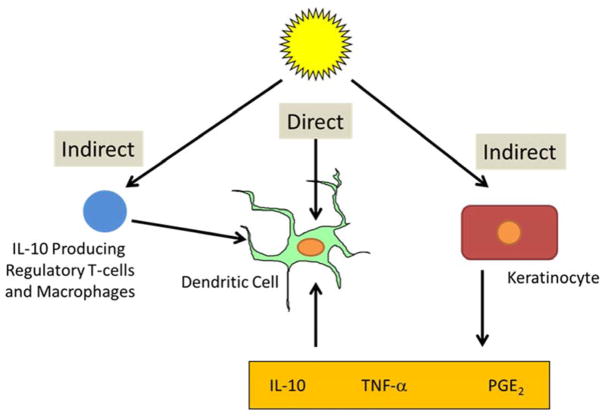Figure 3.
Direct and indirect effects of UV radiation on the antigen presenting function of cutaneous dendritic cells. Following UV exposure, the antigen presenting function of cutaneous dendritic cells is altered by direct effects on the antigen presenting cell itself and by indirect effects. The indirect effects are mediated by UV-irradiated keratinocyte production of soluble mediators such as IL-10, prostaglandin E2, and TNF-α, which then act on cutaneous dendritic cells. In addition, macrophages, which migrate into the skin following UV exposure, and regulatory T-cells both secrete the immunosuppressive molecule IL-10, which diminishes the capacity of cutaneous antigen presenting cells to activate effector T-cells.

